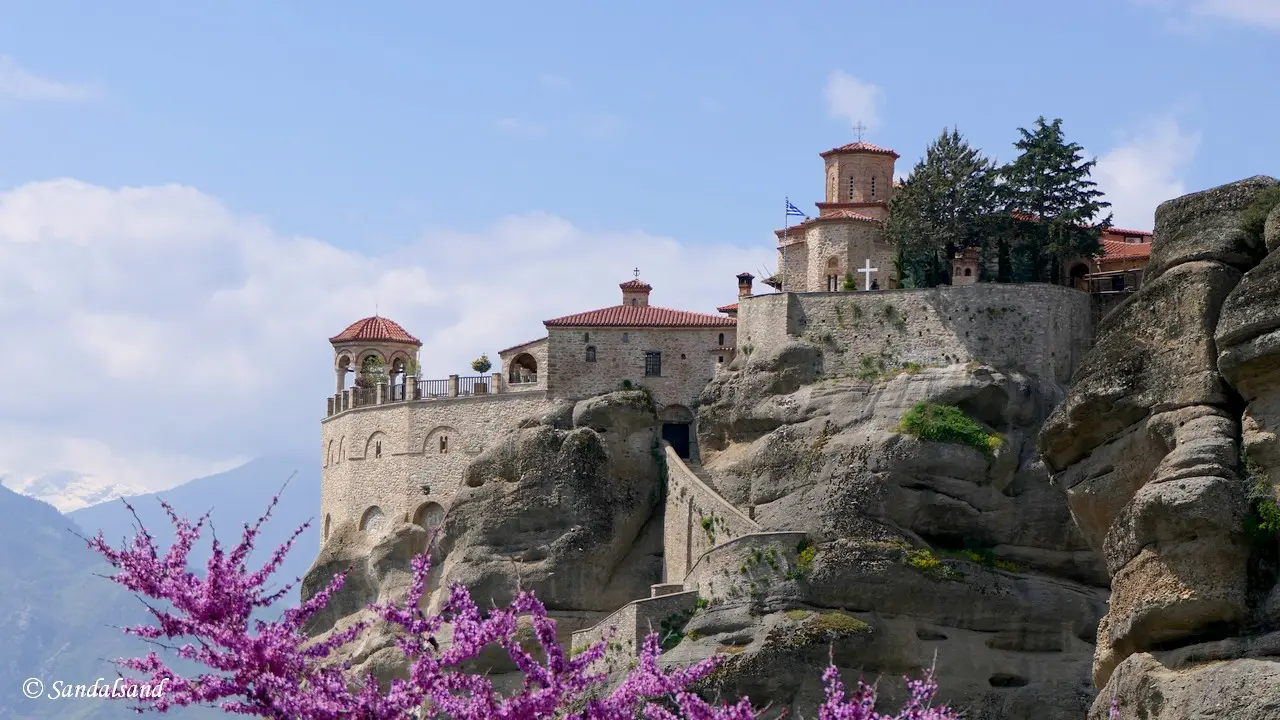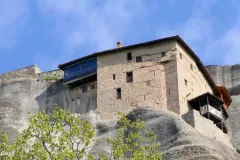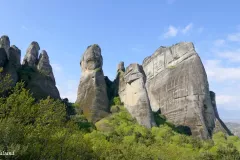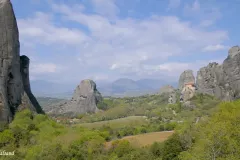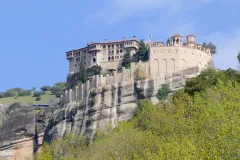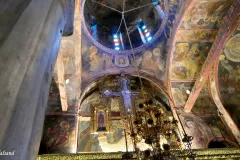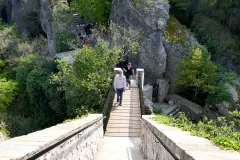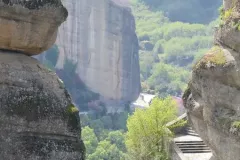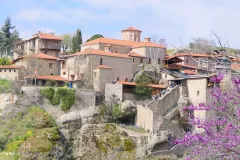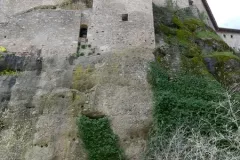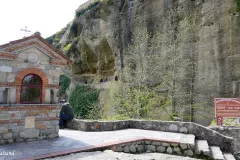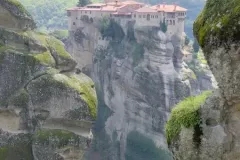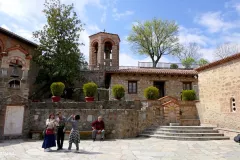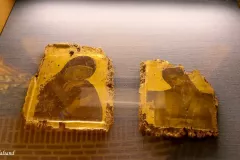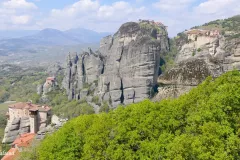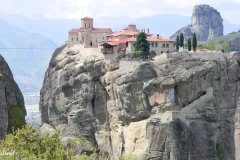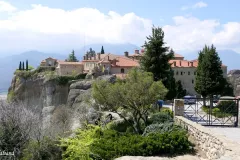Meteora is a dramatic landscape in Greece with tall sandstone peaks. On the tops we may visit a number of centuries old monasteries.
The UNESCO World Heritage List includes over a thousand properties. They have outstanding universal value and are all part of the world’s cultural and natural heritage.
Official facts
- Country: Greece
- Date of Inscription: 1988
- Category: Mixed (Cultural and Natural)
UNESCO’s World Heritage Centre’s short description of site no. 0455:
In a region of almost inaccessible sandstone peaks, monks settled on these ‘columns of the sky’ from the 11th century onwards. Twenty-four of these monasteries were built, despite incredible difficulties, at the time of the great revival of the eremetic ideal in the 15th century. Their 16th-century frescoes mark a key stage in the development of post-Byzantine painting.
About Meteora
The word Meteora means “suspended in the air” which quite accurately describes the remarkable Greek Orthodox monasteries. When the mist is low, it appears as if the monasteries on top of the hills, hang freely in the air. The monasteries were built by monks in the Byzantine period to evade hostiles and to enable them to live a hermit life devoting themselves to their belief. Placing the monasteries on top of hills, some are more than 600 metres, was a success. It also made this into one of the most important monastic communities in Greece, second only to Mount Athos in the north.
Meteora is in short a spectacular landscape with Byzantine monasteries on top of steep rocks. The inside of the monasteries house priceless artefacts and wall paintings. There are six active monasteries, all of which may be visited for a small fee.
Plan your own visit
If you want to visit Meteora, you have several opportunities. You could go on a guided day tour out of Athens, a rather long day it seems. Second, it is possible to stay several days in the area and find your way to the monasteries on foot. There are several paths to choose from. Third, you can join guided tours in the area at daytime or in the sunset. My choice was different, as I came in a rented vehicle and made my own route around the area.
I approached Meteora in a car across the large plain of Thessaly to the southeast, and so would many visitors on day trips out of Athens. As I got near the town of Kalabaka the impressive rocks grew in front of me like magic. On planning my route I had simply drawn a line on the map through Kalabaka to the smaller village of Kastraki to the west. Right behind the latter the road passes very closely by the first of the mountains, and around them.
Find my route on the first of the pictures below. This route turned out to be a very good one, but one can obviously also make it the other way round.
My visit
First, I made a short stop below the Saint Nicholas monastery. This is the smallest of the six active monasteries visitors usually seek out. However, I decided to continue on the road to the next monastery, and I only took a short photo stop on the way to it.
I parked at the foot of the hill with the Monastery of Rousanos on top of it. There was a long flight of stairs to the top, and then I was inside. It was not very big, there is a 3-euro fee to pay (like in all other monasteries), and it is a quite short walk around inside. We do not get to see very much, but the decorated walls inside the chapel were well worth seeing.
Coming up next were the two large monasteries to the north, Varlaam and the Great Meteoreon. There are some great viewpoints near both. Varlaam was not open on the day of my visit, but the Great Meteoron was open, and I made my way down and then up a number of steps. One should bear in mind that on a given day, one of the monasteries is closed. So, if you would want to get inside all six, you will have to stay two days in the area. The Great Meteoreon is the largest of all six monasteries.
From here there is a quite long drive, however not more than eight minutes, to the fifth monastery, the Holy Trinity. On the way there are a number of viewpoints to stop at, and I did. Before I came to Meteora, I had planned to make the sixth monastery my last visit. I had read that St. Stephan’s would be open on this day. It is also the only monastery where you do not have to climb any steps. Unfortunately, the monks had lunch when I arrived. Because a 90 minutes wait did not tempt me, I left Meteora.
What more?
I was very satisfied with my impressions. Perhaps the images below will tempt you too, but beware, you will not be the only visitor to Meteora. It has become a very popular place in Greece.
Fun fact: Have you seen the movie Avatar? The floating mountains in the mist were inspired by Meteora.

